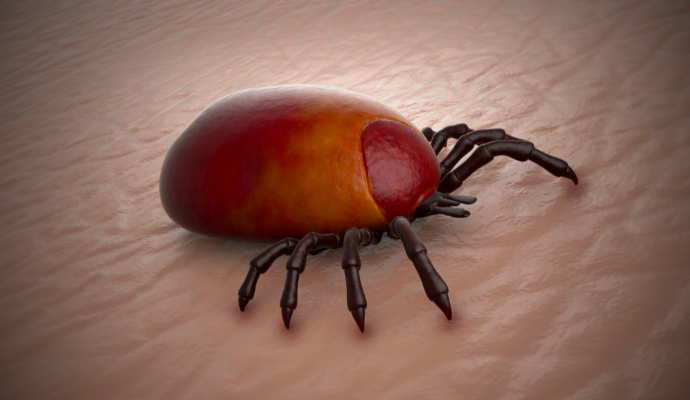Department of Agriculture Licenses Lyme Vaccine for Use in Wild Mice
Officials hope the vaccine will reduce the spread of Lyme in the environment and decrease the disease burden in humans.

Source: Getty Images
- Yesterday, the United States Department of Agriculture (USDA) conditionally licensed an oral vaccine for Borrelia burgdorferi, the bacteria that causes Lyme disease. LymeShield, the product manufactured by Memphis-based US Biologic, will be delivered via feed pellets to wild mice in natural settings.
The product showed positive results in trials conducted by the CDC, the Cary Institute of Ecosystem, the Connecticut Agricultural Experiment Station (CAES), and several universities.
Since 2007, rural rates of Lyme disease have increased by at least 357%, and according to the CDC, the total number of cases may be much higher. Lyme disease must be treated early with antibiotics; otherwise, patients may face severe symptoms, including fever, rash, facial paralysis, and arthritis.
“Lyme disease and other tick-borne diseases present a tremendous public healthcare challenge,” says Scott Williams, MD, Chief Scientist and Department Head at CAES, which performed field trials of the vaccine in residential settings in Redding, Connecticut. “We need to continue to support efforts to innovate and provide these types of new tools.”
Recent scientific evidence suggests that the rise in Lyme witnessed across the US may be due to climate change that has made more of the country habitable for the ticks that spread the disease. According to BMJ Global Health, Lyme prevalence has increased by 14.5% globally. Tick-borne diseases other than Lyme have increased significantly across the board, doubling between 2004 and 2019.
In areas of the country that used to have intense winters, the lack of wintertime cold that previously reduced tick populations may lead to an unexpected increase in the level of Lyme.
“We are going to see another banner year. There is no doubt about it. We have become kind of the epicenter of Lyme disease in the United States in Western Pennsylvania. We have seen a steady level of Lyme disease at UPMC Children's for the last five years. That steady level is the highest of any children's hospital in the country,” said Andrew Nowalk, MD, the Clinical Director of Infectious Disease at UPMC Children's Hospital, in an interview with WTAE.
Detecting Lyme in its early stages is difficult because it often only appears as a rash. It’s especially challenging to detect Lyme in children who may not be able to describe their symptoms accurately.
Pfizer and specialty vaccine company Valneva are currently testing their version of a human Lyme vaccine that could be approved by 2025. In Phase 2 clinical trials, the product displayed strong efficacy in adults and children.
